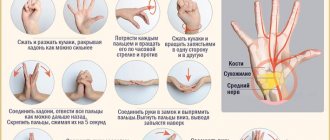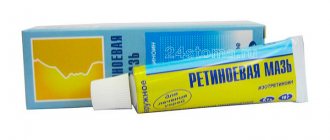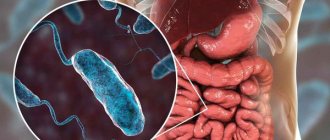Ichthyosis is a genetic disease in which the process of keratinization of the skin is disrupted. Hard scales, reminiscent of fish scales, form on it, and keratin with an altered structure accumulates in the epidermis. Most often, ichthyosis manifests itself in early childhood or even immediately after birth; less often, the disease is acquired.
Patients with this gene mutation suffer from impaired thermoregulation and their metabolism slows down. Due to the increased activity of enzymes in oxidative reactions in patients with ichthyosis, skin respiration processes are accelerated, the functioning of the thyroid gland, gonads and adrenal glands is disrupted. A person experiences a deficiency of cellular and humoral immunity. Dysfunction of the sweat glands is observed, which, against the background of improper absorption of vitamin A, leads to excessive keratinization of the skin. With ichthyosis, there is an excess of keratin with a disturbed structure. The shedding of dead skin cells occurs too slowly. Horny scales form on the skin, between which amino acid complexes accumulate, which contribute to hardening of the skin. Because of this, the formations are tightly linked to each other, and their separation is painful.
Patients with ichthyosis are characterized by brittle and dull hair, splitting nails, multiple caries, and patients often suffer from retinitis and conjunctivitis, and suffer from myopia.
Lamellar ichthyosis
Ichthyosis on the hands
Forms and symptoms of ichthyosis
The most common is the simple (vulgar) form of ichthyosis . Most often, the disease is diagnosed in children a few months after birth. Ichthyosis vulgaris is characterized by dry skin, covered with small white or gray scales tightly adjacent to each other, the skin on the palms and soles becomes folded, and floury peeling appears. With this form of the disease, the skin of the armpits, elbows and knees, groin and buttocks is not affected.
Ichthyosis vulgaris has its own classification. Highlight:
- mild ichthyosis - xeroderma, characterized by dryness and slight flaking of the skin;
- brilliant ichthyosis, in which the skin scales look like a mosaic. This variety affects the arms and legs;
- white ichthyosis, which is characterized by the appearance of small white, mealy scales;
- bullous ichthyosis, in which blisters form on the skin;
- serpentine ichthyosis, characterized by the formation of dense horny scutes separated from each other by grooves;
- horny ichthyosis, in which dense scales rise above the skin;
- lichenoid ichthyosis, resembling lichen. This variety is characterized by small rashes scattered throughout the body.
X-linked ichthyosis appears only in newborn boys and consists of large brown scales that fit tightly to the skin. In winter, an exacerbation occurs; with age, the patient’s condition worsens.
With linear circumflex ichthyosis, redness appears on the skin, surrounded by pink, scaly swellings; with spiny ichthyosis , large spiky layers form.
Epidermolytic ichthyosis and fetal ichthyosis are the two most severe forms of the disease, which can be fatal.
Fetal ichthyosis , also called Harlequin fetus , appears in the embryo at 4-5 months of development. At birth, the baby’s skin is very dry, covered with a “shell” of keratinized scales, the ears, nose and mouth are deformed, the eyelids are inverted, and the limbs have an irregular structure. Such children are either stillborn or die in the first weeks of life.
With epidermolytic ichthyosis, the skin becomes bright red, its top layer peels off, and blisters and wounds form. The skin of the palms and feet, on the contrary, is dense and white. By the age of 3-4 years, concentric ridges form on the skin of the joints.
Causes and mechanism of development of ichthyosis
Since ichthyosis is a hereditary disease, the main reason for its occurrence is a gene mutation that manifests itself in different generations of the same genus. Currently, medicine cannot accurately determine the biochemical mechanism of this mutation. At the same time, it was possible to prove that ichthyosis is always accompanied by pathologies in the metabolism of fats and proteins in the body. This disorder leads to the accumulation of amino acids and cholesterol in the blood, and the result is a rather specific skin reaction.
As a result of research, it turned out that patients with ichthyosis not only experience difficulties with metabolism, they also suffer from impaired thermoregulation in the body, and the enzymes involved in skin oxidation processes become much more active.
Metabolic disorders negatively affect the functions of the adrenal glands and thyroid gland. Depending on how much the disease progresses, pathological manifestations are observed in the activity of the sweat glands and the body’s ability to absorb certain vitamins, in particular vitamin A. These reasons lead to keratinization of the skin and the appearance of scales, between which there is an accumulation of amino acids that serve as biological “cement.” , holding skin scales together and preventing their exfoliation and removal.
Treatment of ichthyosis
Currently, complete treatment of ichthyosis is impossible, since the mechanism of the genetic mutation that provokes the development of the disease is unknown. Now therapy consists of constant hydration, nutrition and healing of the skin, as well as the treatment of concomitant diseases.
Dry skin is known to be prone to cracking. In the case of ichthyosis, this problem is aggravated by a large area of damage and associated problems - decreased immunity and abnormal metabolism. In addition to physical inconvenience and discomfort, cracks are dangerous due to infection. To avoid such a turn of events, it is necessary to moisturize and soften the skin several times a day using special products, and it is more effective to do this after water procedures.
Washing with ordinary soap dries out even healthy skin, and in the case of ichthyosis, its use can bring real suffering: surfactants completely dissolve the protective film, this leads to even greater peeling and dryness. That is why treatment of ichthyosis involves the use of special hygiene products. These include the “Losterin” shower gel, which contains a complex of exfoliating, cleansing and moisturizing components – deresined naphthalan, Japanese Sophora extract and natural oils. The use of “Losterin” gel promotes collagen synthesis, cell regeneration and regulation of water-fat balance.
Treatment may also include taking salt and starch baths and baths with a solution of potassium permanganate. Hydrotherapy helps soften, exfoliate, heal and nourish the skin. At balneological resorts where ichthyosis is treated, carbon dioxide and sea baths are used, as well as applications of silt and peat mud. Therapy helps to establish metabolic processes both in the skin and throughout the body as a whole.
After water procedures, it is necessary to moisturize the stratum corneum of the epidermis. It is necessary to use creams and ointments containing vegetable oils, petroleum jelly or lanolin, as well as vitamins A (retinol) and F. Losterin cream is suitable for the care of very dry skin due to the content of not only urea (10%) and valuable almond oil, but also naphthalan, which has a bactericidal effect, salicylic acid and Japanese Sophora extract, necessary for exfoliating dead skin flakes.
Treatment of ichthyosis necessarily includes keratolytic therapy. Since one of the symptoms of the disease is the accumulation of dead scales in the epidermis, a person suffering from ichthyosis must remove them himself. For this purpose, external agents are prescribed containing lactic and salicylic acids (6%), urea (2-20%), boric petrolatum, ethanol (20%), propylene glycol (60%), and extracts of some medicinal plants. Losterin cream simultaneously contains salicylic acid, urea and Japanese Sophora extract, which ensures its high keratolytic effectiveness.
Among the products for internal use, vitamins A and its analogues (retinoids), B, C, E and PP . Long-term course use of these drugs leads to softening of scales, greater elasticity and accelerated skin regeneration. Regular courses of taking medications are also carried out to strengthen the immune system, improve the functioning of the thyroid and pancreas, and if an infection occurs, antibiotics and antifungals are prescribed. In severe cases of ichthyosis, hospital treatment, including hormone therapy, is necessary.
To produce vitamin D, patients with ichthyosis are prescribed short-term sunbathing and ultraviolet irradiation. Overheating in the sun is strictly prohibited.
It is necessary to note the psychological side of treatment. The patient, especially in childhood, is often alienated from the social environment. This not only aggravates the course of the disease, but also negatively affects the patient’s psychological health; constant stress can lead to chronic depression. Therefore, a psychologist should work with a person suffering from ichthyosis, and the family should always provide support.
Frequently asked questions about ichthyosis
How is ichthyosis inherited from sick parents?
The disease ichthyosis is hereditary. Pathology is caused by mutation of genes on the X chromosome, so girls are carriers, and boys are most often affected.
Is ichthyosis transmitted during contact with a sick person?
No. Ichthyosis is not an infectious disease. They cannot be contracted through contact with sick people. The pathology is caused by gene mutation.
How do people with ichthyosis live?
The disease requires constant skin care. The main tasks are to reduce moisture loss, intensively moisturize the skin, and control the thickness of the stratum corneum. Due to impaired thermoregulation in such patients, it is important to avoid overheating and prolonged stay in rooms with dry air.
Types of pathology
More than 90% of patients develop ichthyosis vulgaris, a disease that first appears in the second or third month of life. Depending on the nature of the skin lesion, the following clinical forms are distinguished:
- xeroderma, or abortive form, is the mildest variant of the disease, in which the skin becomes dry and rough, but there are no scaly layers;
- a simple shape with small scales, thin at the edges and with a dense center, which cover the entire body up to the scalp;
- shiny shape with transparent scales located in the form of a mosaic mainly on the legs;
- white form with white or slightly yellowish scales, similar in appearance to asbestos fibers;
- serpentine in shape with rough keratinizations of brown, brown or gray color, reminiscent of snake scales.
Much less common is the lamellar form of the disease (collodion fetus), fetal (Harlequin fetus), linear, etc. Some of them are incompatible with life - for example, fetal ichthyosis develops in the second trimester of intrauterine development, and the child dies in the first days of life or is born already dead.
Diagnosis of ichthyosis
Usually a dermatologist diagnoses the disease visually. The patient only needs to answer questions regarding heredity and susceptibility to skin diseases. He needs to indicate exactly at what age certain symptoms of ichthyosis began to appear, this will help the doctor prescribe effective treatment. During the examination, the doctor focuses on the condition of the patient’s skin and determines the presence of scales.
When diagnosing ichthyosis, a biopsy is often prescribed; this procedure involves removing a small sample of the affected area of skin for further examination. Sometimes a specialist may suspect that a person has psoriasis, since the symptoms of these diseases are very similar. In order to accurately determine which disease a given patient has, a blood test is performed.
A detailed examination is prescribed in cases where it is necessary to find out whether there is a risk of malignant skin formations.
Why does the disease develop?
The pathology is hereditary, and the main cause of ichthyosis is a mutation of certain groups of genes, which is transmitted to children from parents. In rare cases, the disease is acquired and becomes a consequence of a lack of vitamins, a manifestation of certain blood diseases, etc.
Patients have a disturbance in the metabolism of proteins and amino acids, the activity of oxidative enzymes in the epidermis increases, and the concentration of immunoglobulins decreases. The etiology and pathogenesis are still not well understood, but many researchers note the important role of vitamin A deficiency and the function of certain glands - the thyroid and adrenal glands.
In patients with a genetic form of ichthyosis, metabolic processes, as a rule, slow down, thermoregulation is disrupted, and sweat glands do not work well. High levels of enzymes lead to a significant increase in skin respiration. Cellular and humoral immunity is often reduced. Hyperkeratosis is often accompanied by endocrine diseases, diseases of the adrenal glands and reproductive system, and eye diseases. Patients often experience increased brittleness of hair and nails, and teeth are easily affected by caries.
The skin contains an excessive amount of structurally altered keratin. Due to the slowing of metabolic processes, old skin cells are not shed quickly enough, which leads to the formation of hard scales on the surface of the skin. Amino acid complexes accumulate between the layers of skin cells, accelerating the process of hardening and keratinization, as well as holding the scales together.
Can it be cured?
At the current stage of development, medicine is not yet able to cope with genetic diseases, so modern treatment of ichthyosis is aimed at reducing clinical manifestations and alleviating the patient’s condition. For this purpose they prescribe:
- vitamin complexes, iron-containing compounds, immunoglobulin;
- blood plasma transfusions;
- hormone therapy (in difficult cases);
- baths with the addition of various drugs, emollient ointments and creams;
- physiotherapy, spa treatment according to indications.
The choice of treatment methods depends on the degree of skin damage and the characteristics of the disease.
What causes ichthyosis?
Ichthyosis is inherited and is a genetic disease. In medicine, there are several types of gene mutation:
- The autosomal recessive type is relevant for families where both parents have ichthyosis or are direct carriers of the abnormal gene. In this case, the child is born with this disease.
- Autosomal dominant occurs when one parent is the carrier of the gene. In this case, either a sick child is born, or a healthy one, but who is a carrier of the pathological gene and is able to pass it on to the future generation.









